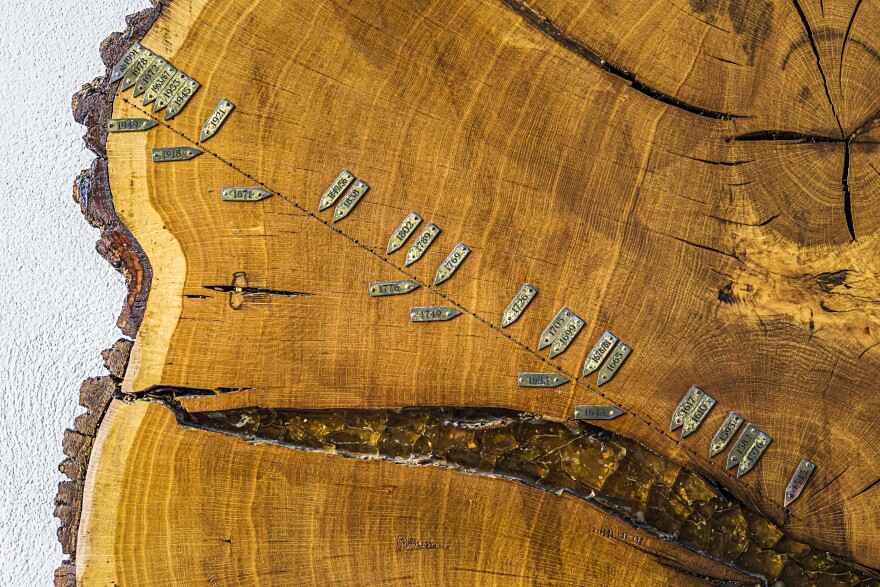Andrew Ellicott (A.E.) Douglass graduated from Trinity College in 1889 wanting to focus on astronomy. But it was his desire to learn about sun spots that first led him to tree rings.
Douglass thought tree rings might reveal something about sunspot cycles. So he left New England and headed to Arizona, a better region of the country to research astronomy, said Trinity Assistant Professor of History Clark Alejandrino.
Alejandrino and students at Trinity College in Hartford tackled a research project this year, digging through the school’s archives to research Douglass’ time there.
He said Douglass’ trip to Arizona was fortuitous and would pave the way for him to establish the field of dendrochronology – the study of tree rings.
“The very few trees that grow in the deserts of Southwest United States were very ideal for dendrochronology,” Alejandrino said. Trees in Arizona are “sensitive to different levels of heat and precipitation.”
So while trying to find out if tree rings could provide clues about sun spots, he instead established the connection between tree-ring size and precipitation levels from the past.
Today, dendrochronology is used by archeologists to date ancient ruins. It’s also a tool for climate scientists, as tree rings can reveal weather patterns from thousands of years ago.
Douglass was the first scientist to determine the age of ancient ruins in New Mexico’s Chaco Canyon and figure out drought was to blame for its abandonment 1,000 years ago.
He eventually established the Laboratory of Tree-Ring Research at the University of Arizona in 1937 and became known as the “father of dendrochronology.”

During his time at Trinity College, he majored in three different subjects: astronomy, geology and physics and graduated with honors in all three.
Students in in Alejandrino’s Climate and History class also found out Douglass taught one of his professors how to photograph the moon. He also created sunrise and sunset charts for another professor and received departmental awards for mathematics and chemistry.
“He loved Trinity College,” Alejandrino said. Adding that “he made annual donations of roughly $500 a year.” Which is more than $7,000 in today’s money.
Alejandino said the assignment gave students “a sense of pride in their institution.” They will be writing a bio of Douglass on the school’s website as part of its 200th anniversary celebration this spring.





